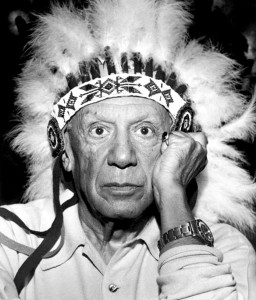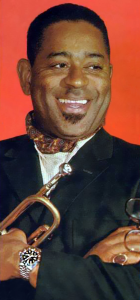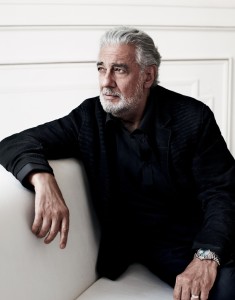ROLEX ICONS : During the last 100 years , men and women who have made extraordinary achievements have trusted Rolex as its reference clock . As Rolex says on its own website, Rolex not only marks the time , make his day.
An example of people who have influenced the history and led ROLEX lifetime is PABLO PICASSO.
Pablo Picasso wearing a Rolex GMT–Master Steel, ref. 1675
In this photo Pablo Picasso wearing a Rolex GMT-Master steel, ref. 1675. Picasso, considered one of the greatest artists of the twentieth century, from the genesis participated in many art movements that swept the world and had a great influence on other great artists of his time. Tireless and prolific, he painted more than two thousand works, present in museums and collections throughout Europe and the world. Also addressed other genres such as drawing, engraving, book illustration, sculpture, ceramics and design scenery and costumes for theatrical productions.
Dizzy Gillespie (1917-1993). Iconic Jazz Legend & Trumpet Virtuoso
In this photo wearing a Bakelite Pepsi Rolex GMT-Master with no crown guard on a Jubilee Bracele.
Dizzy Gillespie is known by many titles including the King of BeBop, and he is considered to be one of the primary architects of modern jazz. Was an American jazz trumpeter, bandleader, composer and occasional Singer.
In the 1940s Gillespie, together with Charlie Parker, became a major figure in the development of bebop and modern jazz.
Plácido Domingo was born on 21 January 1941 in the Retiro district section of Madrid, Spain, and in 1949 moved to Mexico with his family, who ran a zarzuela company. He studied piano at first privately and later at the National Conservatory of Music in Mexico City.
In 1957, Domingo made his first professional appearance, performing with his mother in a concert at Mérida, Yucatán. He made his opera debut performing in Manuel Fernández Caballero’s zarzuela, Gigantes y cabezudos, singing a baritone role. At that time, he was working with his parents’ zarzuela company, taking baritone roles and as an accompanist for other singers. Among his first performances was a minor role in the first Mexican production of My Fair Lady where he was also the assistant conductor and assistant coach. The company gave 185 performances, which included a production of Lehár’s The Merry Widow in which he performed alternately as either Camille or Danilo.
[caption id=”attachment_44526″ align=”alignl



